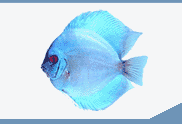

 |
||||||||||||
 |
||||||||||||
| Use of Potassium Permanganate to Control External Infections of Ornamental Fish | ||||||
| Ruth Francis-Floyd and Ruth Ellen Klinger | June 15, 2002 | |||||
Many disease problems of ornamental fish begin as external infections. If uncontrolled, the infections may become systemic, resulting in death of the fish. Correct use of potassium permanganate can effectively control many bacterial, parasitic and fungal agents before systemic infections become established, often eliminating the need for antibiotic therapy. The fish owner saves money because use of expensive antibiotics is decreased, thereby decreasing the incidence of resistant bacterial strains. In the ornamental trade, correct use of potassium permanganate at the onset of an infection can also speed the movement of fish as they do not need to be held for lengthy (often 10-14 day) antibiotic treatments. What is Potassium Permanganate? Potassium permanganate (KMnO 4 ) is an oxidizing agent that has been used for many years in aquaculture. It is also used in water conditioning systems and in the plumbing industry. As an oxidizer, it is able to chemically "burn up" organic material. This includes undesirable organic matter such as bacteria, parasites, and fungus, as well as desirable material such as gill tissue and mucus. Because the chemical cannot distinguish between desirable and undesirable organic matter, it is up to the individual to use the chemical in a manner that results in maximum benefit and minimum harm to treated fish. Color Change Associated with Potassium Permanganate Use When potassium permanganate is active (in its unoxidized form), treated water turns a pinkish-purple color. As the chemical is "deactivated" (by oxidizing organic material), the water color changes to yellow or muddy brown. This color change is an important tool when monitoring chemical treatment (discussed below); however, this may make potassium permanganate undesirable for use in display tanks, exhibits, or ornamental ponds. As with many chemicals used in water, potassium permanganate is harmful to plants and invertebrates. Use of Potassium Permanganate For most fish, potassium permanganate can be administered at a concentration of 2 mg/L as a long-term bath (4-hour minimum) in fresh water or salt water systems. Potassium permanganate is also reasonably safe to use in recirculating systems and has minimal impact on biofilters when used at 2 mg/L. Treated water should retain the purple coloration for at least 4 hours. Some fish, including certain Lake Malawi cichlids, are sensitive to potassium permanganate and lower concentrations (1 mg/L) may be safer. The fish owner can determine species sensitivity by observing the behavior of the fish during treatment. This is especially important when treating a species for the first time. If fish react adversely, immediate action (such as diluting the chemical with fresh water) can be taken. more ... |
 |
|||||
| About Us :: Message Board :: Chat | |||||
| Library :: Photo Gallery :: Links & Resources :: Breeders & Sponsors :: Merchandise | |||||
| Website designed by: EthanCote.com | © 2001-2004, SimplyDiscus.com. All Rights Reserved. | ||||